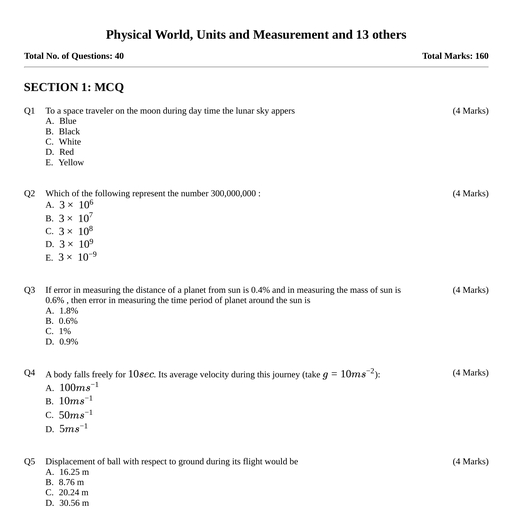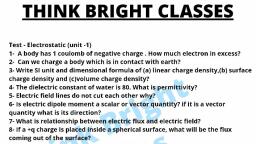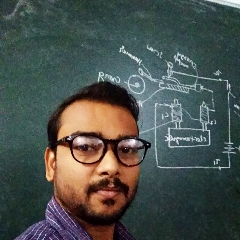Question 1 :
A stone is thrown vertically upward with an initial velocity of 40 m/s. Taking g = 10 $m/s^2$,What is the net displacement and the total distance covered by the stone?
Question 3 :
A ball thrown up vertically returns to the thrower after 6 s. Find its position after 4s.
Question 4 :
What happens to the force between two objects, if the masses of both objects are doubled?
Question 5 :
Two objects of masses $ m_1$ and $m_2$ having the same size are dropped simultaneously from heights $ h_1$ and $h_2$ respectively. What will the ratio of time they would take in reaching the ground be if both of them are hollow, size remaining the same in each case?
Question 7 :
A ball thrown up vertically returns to the thrower after 6 s.What is the maximum height it reaches?
Question 9 :
A car falls off a ledge and drops to the ground in 0.5 s. Let $g = 10 \ m s^{–2}$ (for simplifying the calculations).What is its average speed during the 0.5 s?
Question 10 :
Amit buys few grams of gold at the poles as per the instruction of one of his friends. He hands over the same when he meets him at the equator. Will the friend agree with the weight of gold bought?
Question 11 :
What is the magnitude of the gravitational force between the earth and a 1 kg object on its surface? (Mass of the earth is $6 \times 10^{24}$ kg and radius of the earth is $6.4 \times 10^6$ m.)
Question 12 :
How does the force of gravitation between two objects change when the distance between them is reduced to half ?
Question 13 :
Why does a block of plastic released under water come up to the surface of water?
Question 15 :
The weight of an object is constant and does not change from place to place.
Question 16 :
An object is put one by one in three liquids having different densities. The object floats with $\frac{1}{9} , \frac{2}{11} and \frac{3}{7} $parts of their volumes outside the liquid surface in liquids of densities $d_1, d_2 , d_3 $ respectively. Which of the following statement is correct?
Question 19 :
Two objects of masses $m_1$ and $m_2$ having the same size are dropped simultaneously from heights $h_1$ and $h_2$ respectively. What is the ratio of time they would take in reaching the ground?
Question 22 :
The mass of an object is constant and does not change from place to place.
Question 23 :
The mass of the earth is $6 \times 10^{24}$ kg and that of the moon is $7.4 \times 10^{22}]$ kg. If the distance between the earth and the moon is $3.84 \times 10^5$ km, What is the force exerted by the earth on the moon. (Take $G = 6.7 \times 10^{–11}\ N\ m^2\ kg^{-2}$)
Question 24 :
The volume of a 500 g sealed packet is $350\ cm^3$. Will the packet float or sink in water if the density of water is $1\ g \ cm^{–3}$?
Question 25 :
What is the source of centripetal force that a planet requires to revolve around the Sun?
Question 26 :
It is seen that a falling apple is attracted towards the earth. Does the apple attract the earth?
Question 27 :
When a body is immersed fully or partially in a fluid, it experiences an upward force that is _____________the weight of the fluid displaced by it.
Question 28 :
On the earth, a stone is thrown from a height in a direction parallel to the earth’s surface while another stone is simultaneously dropped from the same height. Which stone would reach the ground first ?
Question 29 :
Why is the weight of an object on the moon$\frac{1}{6}th$ its weight on the earth?
Question 30 :
The volume of 50 g of a substance is 20 $cm^3$. If the density of water is 1 $g cm^{–3}$, will the substance float or sink?













































